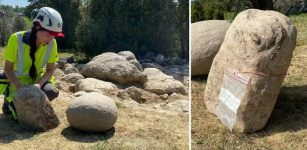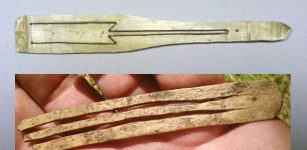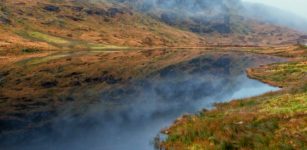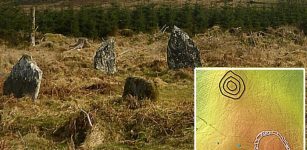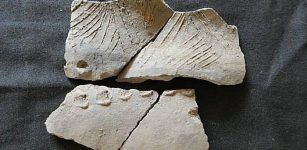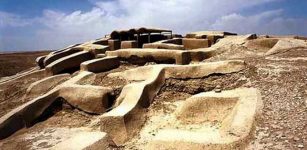First Peoples’ Early Migration To Australia – Influenced By Evolving Landscapes
Conny Waters - AncientPages.com - New research conducted by the University of Sydney provides valuable insights into the migration patterns of the First Peoples of Australia and New Guinea, as well as their settlement locations during the 40,000 years following the initial human arrival on the then-unified continent.
Predicted human presence across Sahul 35,000 years ago, combining both northern and southern migration entry points. Credit: Tristan Salles/Nature
This study is very important because it offers an informative perspective on the ancient movements and habitats of these indigenous populations, contributing to our understanding of the region's rich history and cultural heritage.
Employing a dynamic model that charts the changing terrain, researchers have provided a more accurate depiction of the regions inhabited by the pioneering humans who traversed Sahul, the landmass encompassing present-day Australia, Tasmania, and New Guinea.
Led by Associate Professor Tristan Salles from the School of Geosciences at the University of Sydney, the research model factors-in evolution of the landscape, driven by climate, during the time of human dispersal.
Previous studies of migration patterns have relied heavily on archaeological findings, which often provide a snapshot of a specific time period but may not capture the long-term changes in the landscape that could have influenced human migration and settlement patterns.
Associate Professor Tristan Salles. Image credit: University of Sydney
One crucial factor often overlooked regarding evaluating human migration patterns across the continent is the concurrent evolution of the Earth's surface during these migratory periods.
As Associate Professor Salles points out, the landscapes and landforms underwent significant transformations as people traversed and settled in different regions. Notably, these ever-changing terrains and geographical features are deeply ingrained in Aboriginal culture, reflecting a profound connection between the land and its inhabitants.
The initial human migration to the landmass known as Sahul occurred approximately 75,000 years ago. The research team employed an established landscape evolution model, which provided a detailed account of the climatic conditions spanning the period from 75,000 to 35,000 years ago.
This model offers a novel perspective on the terrain and environments encountered by the pioneering hunter-gatherer communities as they traversed the expanse of Sahul.
The simulations conducted by the researchers have unveiled significant migration routes from two entry points into Sahul: a northern route through Western Papua and a southern route from the Timor Sea shelf. These findings are crucial in understanding the early human migration patterns in this region.
The results were consistent with previous findings, predicting a high likelihood of human occupation at already iconic archaeological sites, such as Ngarrabullgan Cave (in North Queensland), the Puritjarra rock shelter (Central Australia), and the Riwi Cave and Carpenter's Gap 1 rock shelter in the Kimberley (Western Australia).
The migration speeds of early human settlers ranged from 360 meters to 1.15 kilometers per year, contingent upon their entry points and arrival times. These settlers dispersed across the continental interior along river corridors situated on both sides of Lake Carpenteria.
This dispersal pattern emphasizes the exploitation of waterways as pathways for exploration and settlement during the specified epoch.
"Our palaeoecological reconstructions show evidence of diverse interior habitats varying from high altitude tropical forest, subtropical savannah to semiarid woodland and grassland," Associate Professor Salles said in a press release.
The research findings indicate a radiating migration pattern following the courses of rivers and coastlines. This observation aligns with the established migration corridors:
- the eastern corridor tracing the Great Dividing Range from Lake Carpentaria;
- the southern corridors linking Lake Eyre to the eastern routes; and
- the central arterial pathways traversing the arid interior regions of Australia.
The findings could help evaluate how often a specific location is likely to have been visited, and this could "help identify new areas of archaeological interest as a precursor to more costly and time-consuming archaeological surveys," according to Associate Professor Salles.
Paper - Tristan Salles et al, "Physiography, foraging mobility, and the first peopling of Sahul."
Written by Conny Waters - AncientPages.com Staff Writer





